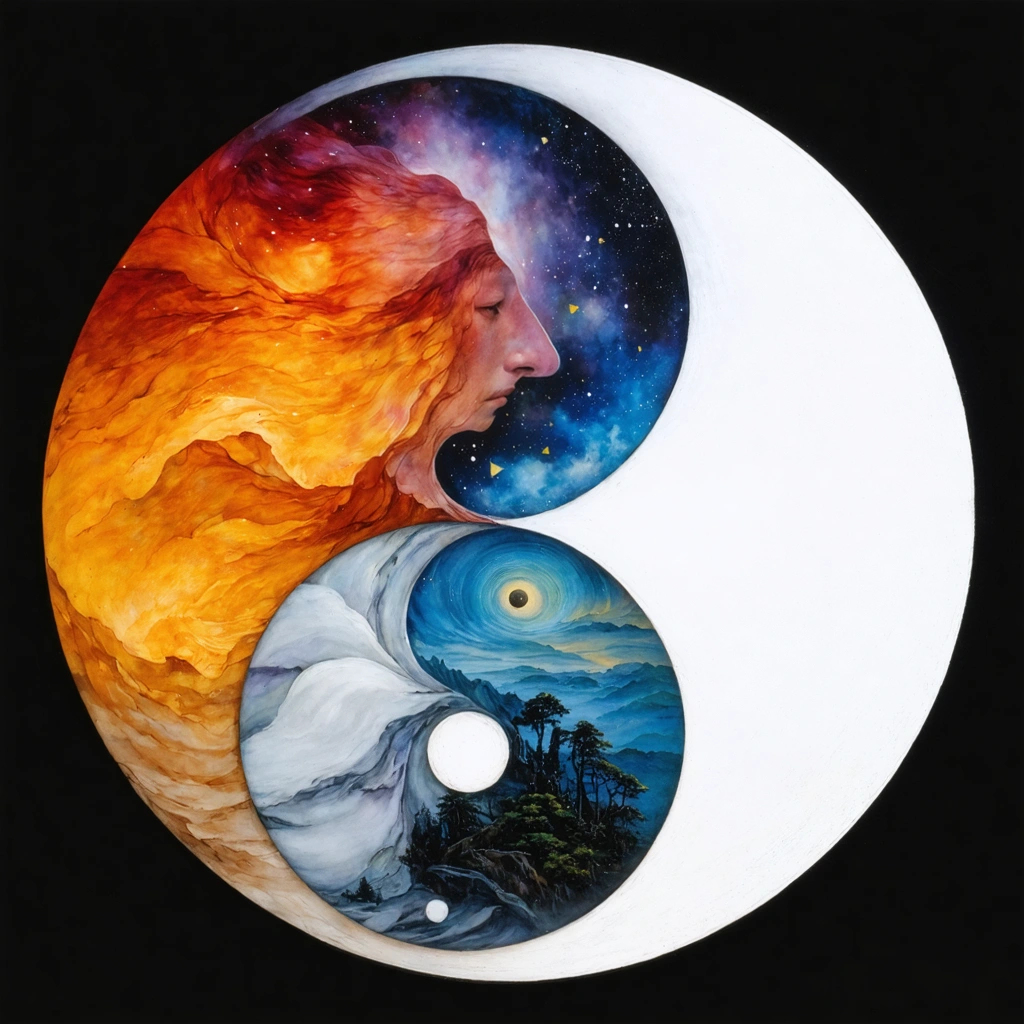
The Origins of a Timeless Philosophy
In ancient China, Lao Tzu wrote a single sentence about Yin and Yang that transformed philosophy forever. First, he challenged conventional thinking by revealing that no person remains one-dimensional. Moreover, he showed that even the kindest individual harbors a tiny recess of cruelty and that happiness intertwines with moments of despair. Additionally, he argued that life blends contradictions in a messy yet beautiful cocktail. Consequently, he provoked us to rethink personal identity and the way we see our world. Furthermore, Lao Tzu inspired millions, as his ideas spread like ripples on a calm pond, urging us to embrace the flux of existence.
The Essence of Duality
A Single Sentence that Changed Everything
Lao Tzu expressed a profound insight when he stated, “A yin (with) a yang is called dao.” This sentence drove home the point that every aspect of life consists of opposing yet interdependent elements. For example, one might observe that:
- In relationships, laughter contrasts with tears.
- In nature, night harmonizes with day.
- In art, chaos often dances with order.
Additionally, he highlighted the intricate relationship between opposites. Therefore, he invited us to discover balance by recognizing that darkness carries a spark of light and vice versa. Moreover, he encouraged us to see that our inner contradictions do not denote flaw but add depth to our existence.
Walking the Middle Way
Navigating Life’s Contrasts
Lao Tzu’s wisdom grows ever more relevant as we face a whirlwind of modern challenges. First, we must learn to channel our energies and accept that inner turmoil coexists with moments of clarity. Next, adopting the Daoist view helps us maintain equilibrium even during volatile times. For instance, below is a numbered list outlining practical steps:
- Recognize your inner conflicts without judgment.
- Adapt your mindset by welcoming both light and dark.
- Embrace change as a natural part of life.
- Celebrate the beauty of contradictions.
Furthermore, these steps remind us that an authentic life flows like a gentle river rather than a turbulent storm. In addition, transitional moments in our lives serve as markers that propel us forward rather than hold us back.
The Yin and Yang in Daily Life
Practical Applications and Reflections
Every day, we confront lessons drawn from this ancient philosophy. Moreover, Daoism teaches us to balance ambition with contentment. Consequently, we see that modern life offers numerous opportunities to live dynamically. Consider the table below, which compares key aspects of Yin and Yang, and their expressions in everyday life:
| Aspect | Characteristics | Examples in Life |
|---|---|---|
| Yin | Darkness, introspection, passivity | Quiet reflection, calm evenings, introspective art |
| Yang | Light, dynamism, activity | Energetic pursuits, lively conversations, innovative endeavors |
Additionally, this table illustrates how balancing these energies helps forge a more fruitful and harmonious life. In daily routines, either element enhances the other, which demonstrates that acknowledging both aspects can lead to personal growth and societal well-being.
Diving Deeper: The Dao and Our Inner World
A Journey Toward Self‑Discovery
In our quest for balance, we must delve deeply into the principle that the Dao interweaves through all creation. First, we explore how the Dao mirrors a river whose currents guide, rather than dictate, our destiny. Additionally, we learn that resisting the natural flow only escalates tension. Moreover, Lao Tzu’s message compels us to face the inherent contrasts within our own hearts. Consequently, we recognize that our inner light can coexist with inner darkness. Furthermore, this revelation imparts a liberating sense of acceptance. For example, imagine a painter who balances broad strokes of vibrant color (Yang) with subtle shadows (Yin). Likewise, a musician composes symphonies that alternate between high-pitched crescendos and deep, mellow tones. In both cases, practitioners embrace contrasts to produce a masterpiece. Next, one might apply these teachings to group settings or social interactions by striving for a balanced approach, thereby enhancing interpersonal relationships. Ultimately, Lao Tzu’s concise yet all‑encompassing sentence inspires us to live every moment as part of a grander, unified design.
The Modern Resonance of Ancient Wisdom
Transforming Contemporary Perspectives
Today, many individuals search for guidance in navigating an increasingly polarized world. As societies advance into deeper complexities, Lao Tzu’s ideas inspire communities to resist extremes and seek harmony. Moreover, entrepreneurs find that applying Yin‑Yang principles nurtures creativity and innovation, while educators witness a balance between rigorous discipline and empathetic instruction. Additionally, activists promote sustainable living by integrating ancient values with modern strategies. To summarize, the legacy of Lao Tzu’s single sentence unites differences and ignites introspection across cultures. For instance, below is a bullet list that highlights several modern interpretations of Yin and Yang:
- Embracing diversity in work environments.
- Fostering balanced approaches to mental health.
- Integrating environmental stewardship with technological advancement.
- Supporting communities through compassionate leadership.
Furthermore, every day we see this ancient wisdom in practice, inviting us to reconsider the way we approach personal dilemmas and global challenges. Finally, the enduring significance of the Yin-Yang concept reassures us that the journey toward balance remains as vital as ever, linking ancient wisdom with modern aspirations.
In conclusion, Lao Tzu’s solitary sentence about Yin and Yang sparks an eternal dialogue between opposites. By continuously embracing the interdependent nature of all things, we open pathways to self‑discovery, harmony, and growth. Hence, each moment offers a fresh opportunity to create a balanced existence. As we navigate life’s complexities, we must remain mindful that true strength lies in the art of balancing contradictions. Therefore, his philosophy not only shapes individual minds but also resonates throughout societies, inviting everyone to participate in an unending dance of balance and dynamic change.






